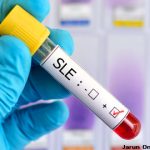“I think the significance is the showing that gut translocation and leaky gut may be playing a role in the female preponderance in SLE,” he says. “Perhaps by screening plasma for bacterial products, we may be to find key causative organisms for this disease.”
‘Novel & Ambitious’ Study
Gregg J. Silverman, MD, a professor of medicine and pathology at the New York University School of Medicine, calls this report “very novel and ambitious.”
He says, “They applied very sophisticated technology to pose new questions about the possible role of the microbiome in SLE. Although each of the tests has become standard, the way they put them together and the selection of the subject population allowed them to pose novel hypotheses that have intriguing implications.”
First-degree relatives share many genetic factors with their SLE relatives. What is being increasingly appreciated is that other factors play a role beyond genetics and sharing DNA.
Shared Microbial Communities: Another Environmental Factor
“We also share environmental factors,” says Dr. Silverman. “There’s an increasing awareness that when we live together, we share environmental factors. Disease may track within a family, in part, because family members may also share the same diet and are colonized by similar microbiological communities.”
He notes that we are all wrapped in these microbiological communities, and we have more bacterial cells than human ones. The components of these communities are shared with the people we live with.
“This paper expands the concept of environmental exposures to more than cigarettes and the sun,” says Dr. Silverman. “It puts another ray of sunshine on understanding the environment within us and how it may influence susceptibility to diseases, such as lupus. We now have to think about dealing with this potential threat and how it may effect treatment in the future.”
Kurt Ullman is a freelance writer based in Indiana.
Reference
- Ogunrinde E, Zhou Z, Luo Z, et al. A link between plasma microbial translocation, microbiome and autoantibody development in first-degree relatives of systemic lupus erythematosus patients. Arthritis Rheumatol. 2019 Nov;71(11):1858–1868. Epub 2019 Sep 27.



